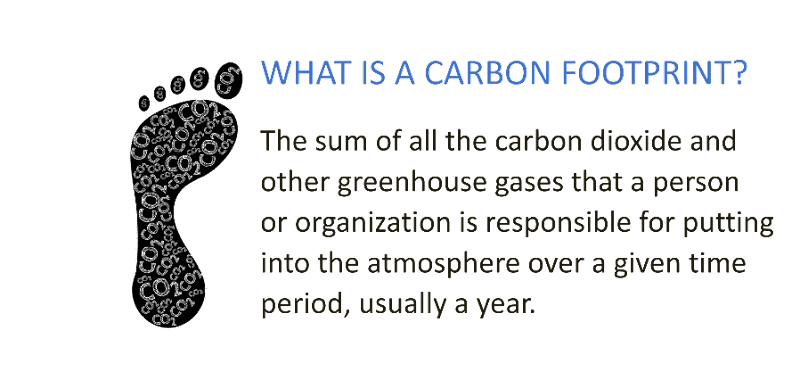Secretly Group
The Secretly Affiliates
2021 Sustainability Plan
Prepared by Jen Cregar for Terra Lumina
Dear Friends,
Over the last year, we’ve been working on our plan for the Secretly affiliates (Dead Oceans, Jagjaguwar, Secretly Canadian, Saddest Factory Records, Ghostly International, The Numero Group, 37d03d, Secretly Publishing and Secretly Distribution) to become more environmentally sustainable. While sustainability has always been a core value of ours, a coherent approach remained elusive. We’ve had some wins (a large solar array on our distribution hub) and some misguided efforts (we once started a micro label, St. Ives, just as a means to use excess LP jackets from other projects…it’s a long story).
Regardless, it has become obvious to us that the path is anything but clear. We know that vinyl is problematic. So is streaming. And touring. Do we need another debate about NFTs? It is easy to become paralyzed. But at the top of 2021, we made a concerted effort to take those first steps towards a more holistic approach. Along the way, we quickly learned two early lessons that we continue to hold in our mind: we should not let perfect be the enemy of good, and we should respect that it’s an iterative process.
Our goals are ambitious, and we’re also learning every day. We aspire to be a change leader, and to use our shop as our laboratory in an effort to be better than we were the day before. Our first of many steps is our Sustainability Plan. It is not complete, but we have to start somewhere, and hopefully our consistent improvement in this area will lead to lasting achievements in the long run. It is how we built our companies, one step at a time, and it is how we intend to move towards our future. We welcome all questions, concerns and, above all, dialogue as we continue our journey.
Yours,
Ben Swanson
Dec 15, 2021
Executive Summary
The Secretly affiliates are proud to join others in the independent music industry in taking action to stem the tide of climate change. This sustainability plan outlines our path to carbon neutrality and ultimately becoming climate positive, meaning we remove more greenhouse gas (GHG) emissions from the atmosphere than we contribute.
In honor of our 25th anniversary this year, we commit to offset our Scope 1 & 2 GHG emissions starting with the most recent pre-pandemic year, 2019, and work towards accounting for our historical carbon debt by our 30th anniversary in 2026. While our early commitments include the use of carbon offsets, the ultimate goal is to eliminate—rather than offset—the GHG emissions that we create.
We annually calculate our carbon footprint—or GHG emissions inventory—to measure progress towards our goal of being climate positive by 2026. In 2019, the Secretly affiliates created 150 metric tons of carbon dioxide-equivalent (MTCO2e) from burning fossil fuels to heat our buildings (Scope 1), fuel our company vehicle (Scope 1), and power our buildings (Scope 2). In 2020, we lowered our Scope 1 & 2 carbon footprint to 116 MTCO2e, a 22% reduction, in part due to installing solar panels that cut our main office’s grid electricity use by 80% and reduced heating and cooling of our offices while employees worked remotely. We are updating our accounting systems so that we can incorporate Scope 3 emissions for the first time with our 2021 carbon footprint to be reported next year.
This plan builds on our early efforts to lower our carbon footprint by:
- minimizing product packaging (eliminating most plastic jewel cases on Secretly Group releases in 2009)
- operating strict pressing rules to avoid overstocks of CDs and vinyl
- recycling unsold formats / packaging
- installing a solar array at our main office
Moving forward, we commit to further slash our carbon emissions by:
- investing in energy efficiency throughout our buildings
- assessing opportunities to replace natural gas equipment with electric options
- measuring and reducing our scope 3 emissions
- switching to 100% renewable energy
- being a founder investor and user in IMPALA’s bespoke Carbon Calculator for the music industry
For emissions that we cannot directly reduce, we will continue to purchase high-quality, third-party certified carbon offsets. We are committed to be a positive force for change in the face of climate change, and hope that our action will inspire others.
Introduction
Evidence of climate change is all around us from festivals canceled due to the threat of wildfire and sickening air quality, supply chain disruptions due to fuel shortages in the face of climate change-driven storms, and power outages resulting from storms or lack of water to operate power plants. As we grapple with climate change’s increasingly dangerous and pervasive impacts, we also are reckoning with our role in contributing to climate change.
At Secretly, we exacerbate climate change by burning fossil fuels to power our operations and through the embodied carbon footprint of the supplies we purchase and the products we sell. With this sustainability plan, we move from awareness to action. We are encouraged by the commitments and action of our peers and hope to further inspire others to join the movement for climate action.
This plan outlines our path to carbon neutrality and ultimately becoming climate positive.
The Secretly Affiliates Climate Commitment

In honor of our 25th anniversary, we commit to turning our negative climate impact into a positive one. This plan builds on a strong foundation of taking care of the environment through producing our own solar energy at our flagship office and cutting packaging waste.
Figure 1 shows our path to climate positivity. We immediately commit to offset our direct (Scope 1) and electricity-related (Scope 2) greenhouse gas (GHG) emissions starting with the most recent pre-pandemic year, 2019, and work towards accounting for our historical carbon debt by our 30th anniversary in 2026. As we look forward to safely returning to our offices, we also are taking steps to directly lower our emissions, for example, by switching to 100% renewable energy and investing in energy efficiency.
We are updating our accounting systems so that we can estimate our indirect Scope 3 emissions from business travel, employee commutes, the supplies and products we buy and sell, and the waste we generate. We will phase in Scope 3 accounting, starting with business and employee commute travel and adding in supplies, products, and waste in 2022. Along the way, we will seek opportunities to collaborate with our peers, suppliers, and distributors to collectively reduce the embodied carbon of our supply chain, i.e., all the emissions associated with the mining, processing, manufacturing, transportation, use, and disposal of raw and finished supplies and products.
On or before our 30th anniversary in 2026, we commit to annually offset our carbon footprint, including all scopes measured at the time, plus offset 5x our 2019 Scopes 1 & 2 emissions to symbolically account for our carbon debt incurred since our founding in 1996.
Figure 1. The Secretly Affiliates Pathway to Climate Positive Operations

Measuring Our Progress
We annually calculate our carbon footprint—or GHG emissions inventory—to measure progress towards our goal of being climate positive by 2026. Our GHG inventory and reporting process is conducted in accordance with The GHG Protocol Corporate Accounting and Reporting Standard, which is the global standard for accurately measuring an organization’s carbon footprint in a way that can be readily compared across time and across organizations. The GHG Protocol recommends reporting emissions in categories called “scopes,” which are defined in the Glossary.
We selected calendar year 2019 as the base year for measuring our carbon emissions as 2019 most closely approximates our typical operations when not affected by a global pandemic. We are committed to annually updating our carbon footprint to monitor trends and identify additional emissions reduction opportunities over time. We will use a GHG Emissions Inventory Plan for ensuring consistency in scope and data quality in annual measurement and reporting.
In 2019, the Secretly affiliates created 150 metric tons of carbon dioxide-equivalent (MTCO2e). That’s the same amount of carbon as…

…burning 2 tanker trucks’ worth of gasoline

…powering 27 homes for a year

…184 acres of U.S. forests store in a year
Figure 2 shows our 2019 carbon footprint by scope, and Figure 3 breaks down our GHG emissions by office.
Figure 2. The Secretly Affiliates 2019 Carbon Footprint by Scope
| Scope | MTCO2e |
| Scope 1 (refrigerant) | - |
| Scope 1 (truck) | 1 |
| Scope 1 (natural gas) | 63 |
| Scope 2 (electricity) | 85 |
| TOTAL | 150 |

Figure 3. The Secretly Affiliates 2019 Carbon Footprint by Office

Figure 4 shows the 2019 carbon intensity, in GHG emissions (MTCO2e) per square foot, for each office. Because 99% of our carbon footprint comes from building energy use, evaluating carbon intensities allows us to see which offices are using energy relatively efficiently versus which offices we may need to target for energy efficiency improvements. We also can measure carbon intensity in GHG emissions per employee. The same general trend holds true for each office’s carbon intensity per employee as per square foot, with the exception that the Chicago and Bloomington-213 offices switch spots as the #1 and #2 least efficient (highest carbon intensity) offices. The Chicago office (3.04 MTCO2e per employee) stands out as an outlier with more than double the per-employee carbon intensity as the Bloomington-213 office (1.26 MTCO2e per employee). They both have higher-than-average per-square-foot carbon intensities, suggesting the Chicago and Bloomington-213 offices would be good candidates to prioritize for energy upgrades.
Figure 4. Secretly Affiliates 2019 Carbon Intensity by Office

Table 1 shows a 22% decrease in the Secretly affiliates’s GHG emissions from 2019 to 2020. This reduction is likely due in part to installing solar panels that cut our main office’s grid electricity use by 80%, and because our operations shifted to employees’ homes, where the emissions associated with powering their laptops and lights become part of their household’s carbon footprint outside of the Secretly affiliates operational control. Despite the overall downward trend in office energy use, the company’s warehouses and the Los Angeles office consumed more electricity in 2020 than 2019, suggesting potential opportunities for additional energy efficiency improvements. The company’s box truck also increased diesel usage in 2020, which may suggest opportunities for fuel savings through reduced trips.
Table 1. Secretly 2019 vs. 2020 Carbon Footprint Comparison by Scope

Taking Action
Measuring our carbon footprint is a starting point for understanding the magnitude of our climate impact and directs us to where we can take action to lessen our carbon footprint. While we commit to annually offset our measured emissions starting with 2019, the ultimate goal is to eliminate—rather than offset—the GHG emissions that we create.
We have already implemented projects that lower our carbon footprint by minimizing product packaging, encouraging greener commutes, and installing a 60-kilowatt solar array on the roof of our main office in Bloomington. The solar energy system is expected to reduce our greenhouse gas emissions by more than 820 MTCO2e—or the equivalent of taking 180 cars off the road for year—and generate a net savings of $48,000 over its lifetime.
Moving forward, we are pursuing the following GHG reduction projects:
- Partnering with local utilities to identify and implement cost-effective energy efficiency upgrades, starting with offices that have higher than expected carbon intensities and/or whose energy consumption trended upward in 2020 despite having fewer people in the office.
- Switching to 100% carbon-free renewable electricity. We will follow the lead of our main office in Bloomington to explore onsite solar and other renewable energy options, like the third-party verified 100% renewable electricity that powers our London office.
- Assessing opportunities to switch natural gas equipment to electric options at the end of their useful life. Converting to electric equipment and 100% carbon-free renewable electricity will eliminate GHG emissions from our energy use.
For emissions that we cannot directly reduce, we will continue to purchase high-quality, third-party certified carbon offsets. We prioritize offsets from projects that preferably take existing carbon out of the atmosphere, for example, through tree planting or storing carbon underground, rather than projects that avoid the release of new carbon emissions.
To zero out our 2019 and 2020 carbon footprints, we are investing in carbon offsets via Native.
Conclusion
We are excited to lead the way to a more sustainable independent music industry. We are committed to be a positive force for change in the face of climate change, and hope that our action will inspire others. Will you join us?
The Secretly affiliates include Secretly Distribution, Secretly Group (Secretly Publishing and the labels Dead Oceans, Jagjaguwar, Saddest Factory Records, Secretly Canadian), Ghostly International, The Numero Group and 37d03d.
Glossary
Carbon Debt (aka, Climate Debt) – The amount of greenhouse gas emissions that a person or organization is responsible for putting into the atmosphere over its existence minus the amount of greenhouse gas emissions that the person or organization is responsible for removing from the atmosphere through direct reduction, avoidance, or sequestration.
Carbon Dioxide (CO2) – Carbon dioxide is the greenhouse gas that contributes the most to climate change due to the large volume of CO2 that is released into the atmosphere. It comes from burning fossil fuels, solid waste, and plant materials and some industrial chemical reactions (e.g., creating cement).
Carbon Dioxide-equivalent (CO2e) – A measurement of multiple types of greenhouse gases combined into a single unit. It is typically measured in metric tons (MTCO2e).
Carbon Footprint (aka, Greenhouse Gas Emissions Inventory) – The sum of all the greenhouse gas emissions that a person or organization is responsible for putting into the atmosphere over a given time period, usually a year.
Carbon Offset (aka, Carbon Credit) - A unit of greenhouse gas emissions that is reduced, avoided, or sequestered (stored in plants, soils, rocks, and other materials) to compensate for greenhouse gas emissions occurring elsewhere.
Climate Positive (aka, Carbon Negative) – A state that is reached when a person or organization has removed more greenhouse gas emissions from the atmosphere than it has put into the atmosphere.
Embodied Carbon – The sum of all the greenhouse gas emissions resulting from the mining, processing, manufacturing, transportation, use, and disposal of the materials (or ingredients) that go into the creation of a building, vehicle, device, meal, etc.
Greenhouse Gas (GHG) –A type of gas that traps heat in the Earth’s atmosphere, contributing to climate change. The greenhouse gases that are mentioned in this plan are:
- Carbon dioxide
- Methane
- Nitrous oxide
- Hydrofluorocarbons
Hydrofluorocarbons (HFCs) – Hydrofluorocarbons are a type of man-made, very powerful greenhouse gas that are emitted from industrial processes and used in refrigeration. They are commonly used as replacements for other gases that contribute to the hole in the ozone layer.
Methane (CH4) – Methane is the main component of natural gas and a powerful greenhouse gas. It is emitted during the production and transport of fossil fuels; when cows, sheep, and other ruminant animals digest their food; and when living material decomposes in landfills.
Nitrous Oxide (N2O) – Nitrous oxide is “laughing gas” and a powerful greenhouse gas. It is created from burning fossil fuels and solid waste. It also is emitted through treating wastewater and through land use practices (e.g., applying fertilizer).
Scope 1 Emissions – Greenhouse gas emissions that an organization directly creates through the:
- Onsite combustion of natural gas or other fuel used for heating, onsite power and steam generation, and cooking;
- Combustion of gasoline, diesel, or other fuel to power vehicles; and
- Refrigerants used for air conditioning, chilling, and refrigeration.
Scope 2 Emissions – Greenhouse gas emissions that an organization indirectly causes at the power plants that generate the electricity that powers the organization’s facilities, electric vehicles, and other electric equipment.
Scope 3 Emissions – Greenhouse gas emissions for which an entity is indirectly responsible through the products and services it purchases and sells, the business and commute travel of its employees, and the material waste that it creates. While Scopes 1 and 2 are required for a foundational carbon footprint, accounting for Scope 3 emissions is optional due to the added complexity of estimating these emissions.